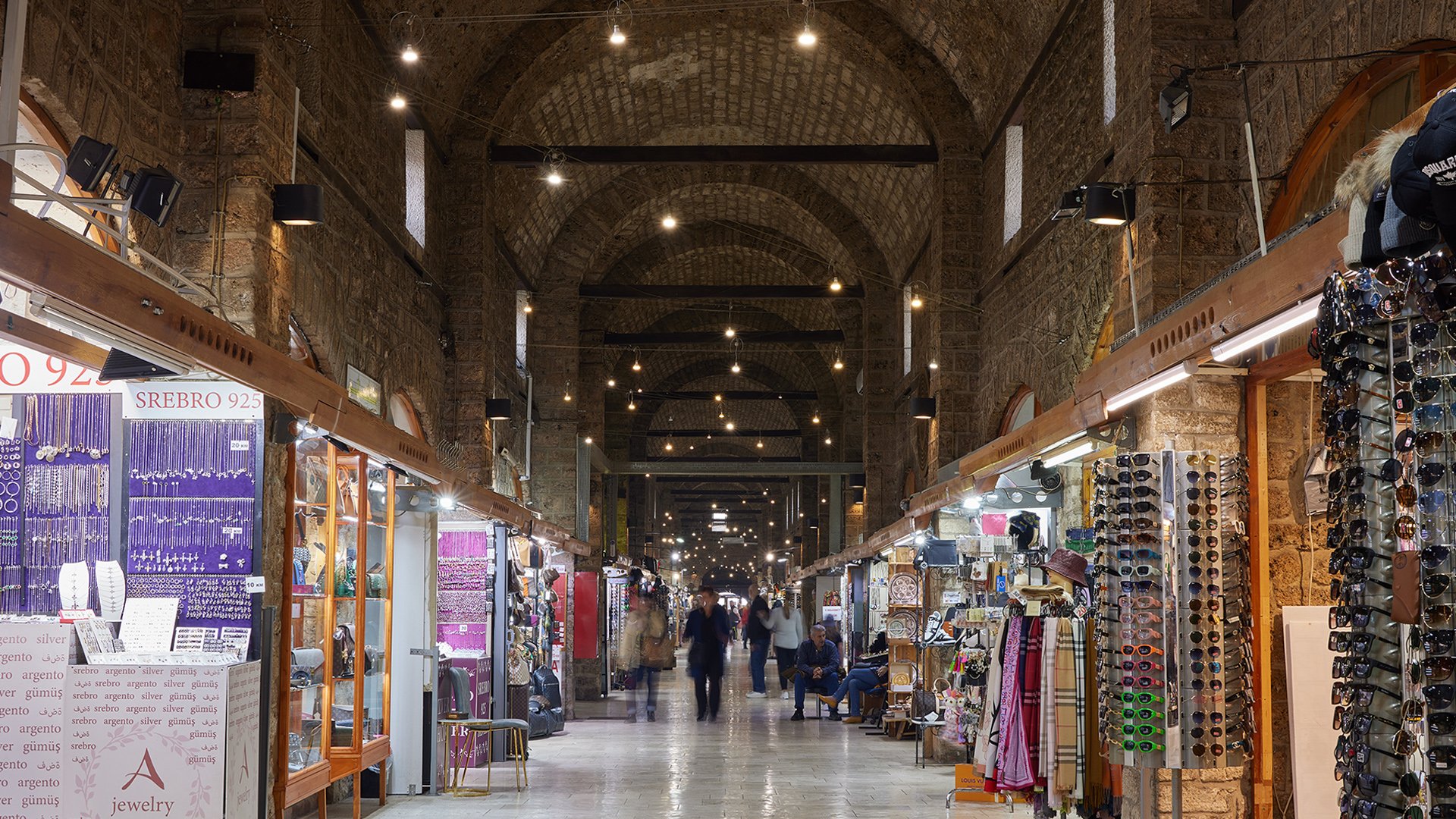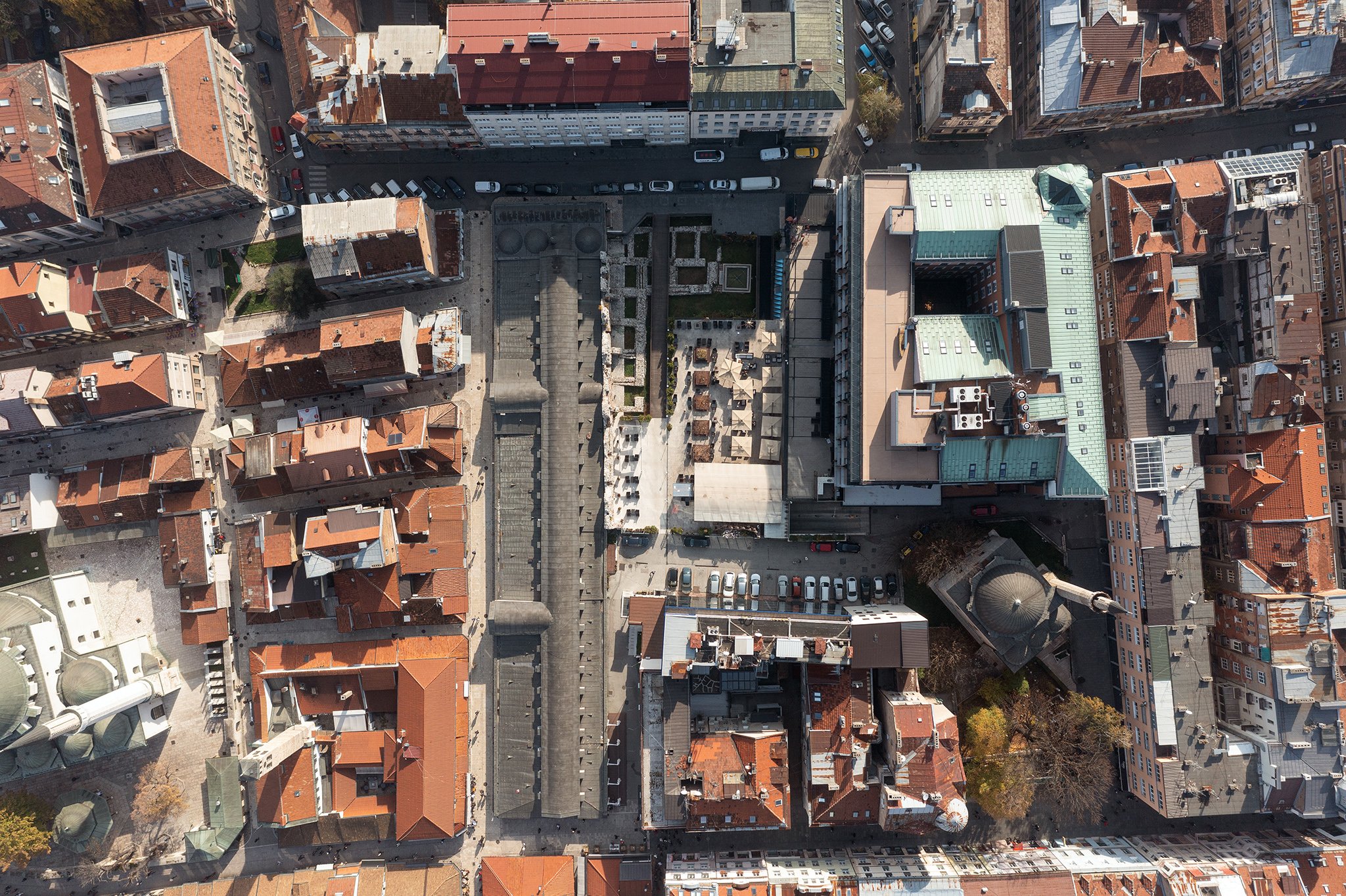
GAZI HUSREV-BEY BEZISTAN
Author: Amra Madžarević, Museum of the City of Sarajevo • Photo & video: Mirza Hasanefendić
Bezistans are closed markets, made in downtowns of the cities with developed trade during the Ottoman Empire. Expensive goods and textiles were sold in them. At a time, Sarajevo had three bezistans, only two of which have been preserved up to this day. Banja Luka and Travnik also had bezistans.
One of the two preserved buildings of the kind in Sarajevo is Gazi Husrev-bey bezistan, which, in a contemporary way, still serves its purpose.
It was commissioned by Gazi Husrev-bey, one of the most significant waqifs who, in the 16th century, which is considered as the golden age of Sarajevo, commissioned many monumental buildings.
The bezistan was built in the period between 1537 and 1577. By its base, it differs from typical bezistans, built on a square base; this one is rectangular, 106 meter long and 19.5 meter wide on average. It was built of stone, and masters from Dubrovnik, who were widely known at the time, also participated in its building. This long bezistan is covered with a barrel vault. In its interior, there are shops on both sides. There are also shops outside, in the Kujundžiluk Street (today Gazi Husrev-begova Street), as constituent part of the building. Across the street, there used to be an inn called Tašlihan, leaning on the bezistan. The inn has been razed, and today one can see its remains.






